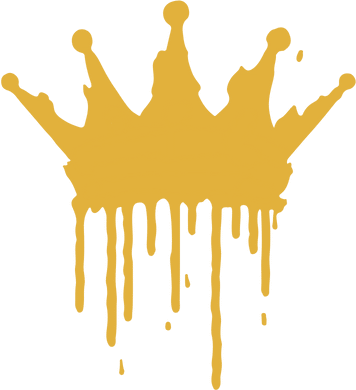The prices of gold, platinum, and silver have seen significant movement from January 2024 to early 2025, affecting both the jewelry industry and consumer buying trends. This report will break down:
- How prices have changed over the last year
- Key factors influencing these changes
- What to expect in 2025
- How this impacts jewelry buyers
This is designed to be a buyer-friendly guide that helps you understand why jewelry prices have changed and what to expect when shopping for fine jewelry in 2025.
#
1. Precious Metal Pricing Trends (Jan 2024 – Early 2025) #
Gold, silver, and platinum prices have shifted due to economic uncertainty, rising investment demand, and changes in industrial and jewelry markets.
Gold Prices
- January 2024: $2,050/oz (~£1,600/oz)
- Late 2024 Peak: $2,748 – $2,800/oz (~£2,250/oz) record high
- March 2025: $2,900/oz (~£2,300/oz)
Gold has increased by ~40–45% in the past year, making it more expensive for jewelry buyers.
Silver Prices
- January 2024: $24–$25/oz (~£18–£20/oz)
- Late 2024 Peak: $35/oz 12-year high
- March 2025: $32–$33/oz (~£25/oz)
Silver prices are up ~30–35% in the past year, with demand rising in both investment and industrial use.
Platinum Prices
- January 2024: $950–$1,000/oz (~£750–£800/oz)
- Late 2024 Peak: $1,090/oz
- March 2025: $940–$1,000/oz
Platinum prices have remained relatively stable (+0–5% change), making it a more affordable luxury option compared to gold.
#
2. Why Have Metal Prices Increased? #
Several key factors have driven up the prices of gold, silver, and platinum:
1️⃣ Economic Uncertainty & Inflation
- Global conflicts, inflation, and financial uncertainty increased demand for gold and silver as “safe-haven” assets.
- The U.S. Federal Reserve lowered interest rates, weakening the U.S. dollar and driving gold prices higher.
- Investors and central banks bought record amounts of gold, pushing prices to new highs.
2️⃣ Industrial & Jewelry Demand
- Gold jewelry demand actually fell (-11%) in 2024 because of high prices. Many buyers opted for smaller pieces or lower-karat gold (14K instead of 18K).
- Silver jewelry demand rose (+5%) as buyers turned to silver as an alternative to expensive gold.
- Platinum jewelry demand stabilized (+3%), but the market was still dominated by industrial use (automotive sector).
3️⃣ Supply Chain & Mining Costs
- Gold and silver mining production stayed flat, but demand surged, creating an imbalance.
- Platinum supply was tight, especially from South Africa, but weaker industrial demand kept prices from rising too much.
#
3. Jewelry Market Impact: What This Means for Buyers #
💍 Gold Jewelry: Higher Prices & More Lightweight Designs
- Expect higher prices for gold wedding bands, engagement rings, and necklaces due to gold’s 40% increase.
- Many jewelers are offering lighter-weight gold designs or lower-karat options (14K vs. 18K) to keep prices accessible.
- Some brands are promoting gold-plated or vermeil jewelry as a budget-friendly alternative.
💍 Silver Jewelry: Still Affordable, but Prices Are Rising
- Silver remains a popular and affordable alternative to gold.
- With silver prices up 30–35%, some silver jewelry pieces may cost slightly more than they did in 2024.
- Expect more designer brands featuring sterling silver in response to the high cost of gold.
💍 Platinum Jewelry: A Strong Value Choice
- Platinum remains cheaper than gold per ounce, making platinum engagement rings and wedding bands an attractive alternative.
- While platinum is denser than gold, it hasn’t risen in price as dramatically, so some jewelers may market it as a “luxury-for-less” option in 2025.
- Expect small price increases (~5%) in platinum jewelry due to supply constraints.
#
4. What to Expect in 2025 #
📈 Gold: Likely to Stay High
- Gold is expected to remain above $2,750/oz, with some forecasts predicting $3,000/oz+ by the end of 2025.
- If inflation remains high or geopolitical tensions escalate, gold prices may climb further.
📈 Silver: Likely to Stay Strong
- Industrial demand (solar panels, electronics) will keep silver prices elevated, with a possible 7% increase in 2025.
- Silver could reach $35–$38/oz if investment demand surges.
📈 Platinum: Gradual Increase
- Platinum could see a modest 5% increase, but it is unlikely to skyrocket like gold.
- Supply shortages in South Africa may push prices above $1,100/oz later in the year.
#
5. Buying Tips for 2025 #
💡 If You’re Buying Gold Jewelry:
- Consider 14K gold instead of 18K or 22K to reduce costs. If you would like something made in 10k, we can do that too!
- Buy sooner rather than later if gold prices continue climbing.
- Look for lighter-weight designs or secondhand/vintage gold jewelry for savings.
💡 If You’re Buying Silver Jewelry:
- Expect slightly higher prices but still a good value.
- Look for high-quality sterling silver (925 stamp) to ensure durability.
💡 If You’re Buying Platinum Jewelry:
- If you prefer a white metal but don’t want to pay for platinum, white gold with rhodium plating is a solid alternative.
- Remember that platinum is heavier than gold, so some rings may feel different on the finger.
#
6. Final Takeaways #
- Gold is at record highs (~$2,900/oz) and is expected to remain expensive throughout 2025.
- Silver is up 30–35% but still offers a strong alternative to gold jewelry.
- Platinum remains stable and is a great value for high-end jewelry buyers.
- Expect jewelers to adjust designs, offering more lightweight gold pieces, increasing silver collections, and promoting platinum as an alternative.
For jewelry buyers, 2025 is shaping up to be a year of rising costs but also greater innovation in jewelry design. Knowing the metal trends can help you make the best choice at the right time if you’re shopping for a gold, silver, or platinum piece.


